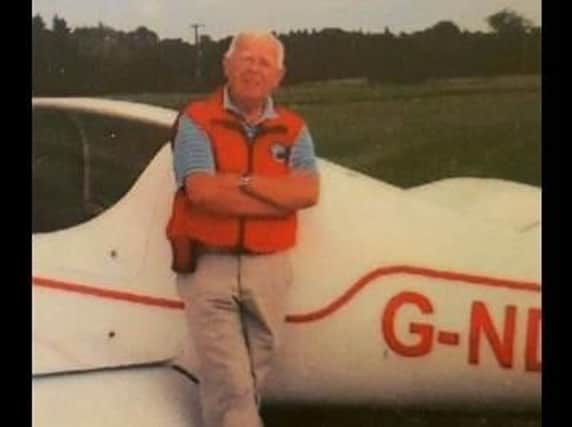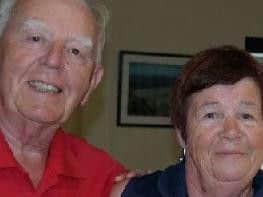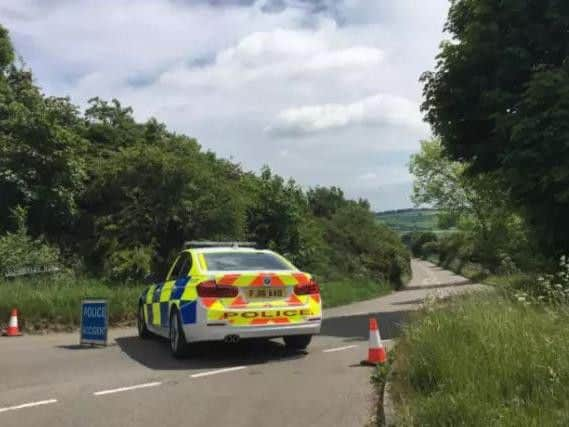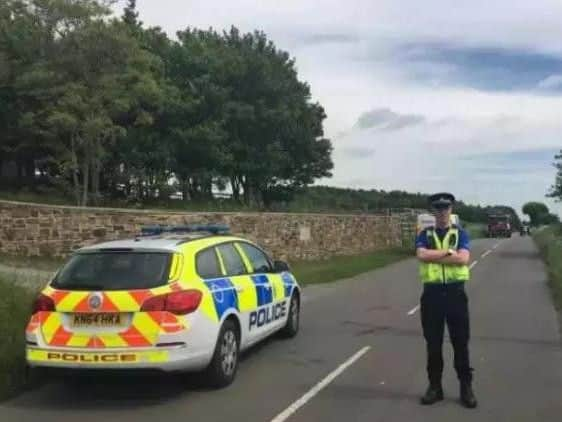Tragic death of much-loved Chesterfield pilot was 'accidental', inquest hears


Bryan Allsop, 79, of Walton, died on the afternoon of May 28 last year when his Europa light aircraft, which he was flying, suffered a partial loss of engine power and descended and crashed in a field in Apperknowle, north Derbyshire.
The jury came to a unanimous conclusion of accidental death and listed a number of contributory factors after listening to the evidence over two days at Chesterfield Coroners' Court on Tuesday and Wednesday.
Advertisement
Hide AdAdvertisement
Hide AdPaying tribute to her husband of 38 years during the inquest, Sylvia Allsop, said: "Bryan was a man who lived life to the full and did not worry about getting old.


"He was a first-class pilot. He had lots of years of experience. He was a very confident person."
The inquest heard that Mr Allsop was an experienced pilot of around 30 years, was in good health and had no medical issues.
The retired businessman, who owned an electronics business in Clay Cross, had flown in the UK and America and would normally fly once or twice a week. He had even built a plane himself.
Advertisement
Hide AdAdvertisement
Hide AdDuring the run up to May 28, 2017, he had not been flying as frequently as he had been making some modifications to the plane.


On that day, which was said to be hot and clear conditions, Mr Allsop had been 'trialling' the small, two-seater plane after fitting a device, which he had made himself, which reminded him to put the landing gear down. He had also made changes to his radio previously.
Mr Allsop had already flown twice that day - one which he described as the 'worst landing he had ever done' - and another one which he abandoned while still on the grass airstrip at Summerley Airfield, Apperknowle.
Sadly, on his third flight, the plane suffered a partial loss of engine power while making a climb. Mr Allsop tried to turn back to the airfield but descended and crashed in a field adjacent to Summerley Road. He died instantly at about 1pm.
Advertisement
Hide AdAdvertisement
Hide AdA post-mortem found that Mr Allsop suffered severe multiple injuries, including to the chest and head.


Pilot Robert Hitchcock, who had known Mr Allsop for 10 years and witnessed the crash, said: “I heard a noise and, because it was not a normal noise, it intrigued me. It was the noise of an engine not developing full power. Then he started a turn in the climb and my heart just dropped at that moment because the instant he did that, I was just... no chance.”
He added: “It was a difficult day and I lost my friend. It was tough...it was tough.”
Other eyewitness accounts reported seeing the plane 'flying low' and the engine 'making an unusually loud noise'.
Advertisement
Hide AdAdvertisement
Hide AdOn his first flight, Mr Allsop had flown over his Walton home, 'tipping the wings' to his wife Sylvia, as he always did, before flying back to the airfield. Mrs Allsop said she noticed the noise of the engine and was going to tell her husband on his return home.
"About one hour later I received a call to say there had been a terrible accident." Mrs Allsop said.
An investigation carried out after the crash by the Air Accidents Investigation Branch (AAIB) found there had been a problem with the vapor fuel return line which had been re-routed. This effectively caused 'bubbling' and a 'lock' in the fuel line and the engine to lose power. It could not be determined when the re-routing took place.
The investigation also found Mr Allsop had been using E5 Mogas fuel, but no records could be found to confirm that the Light Aircraft Association (LAA), which oversees the 'airworthiness' of aircrafts, had given the go-ahead for this grade of fuel to be used.
Advertisement
Hide AdAdvertisement
Hide AdBut overall the plane had been well maintained, was in good condition and had annual inspections since Mr Allsop bought it in 2014.
An expert from AAIB, Georgina Dean, said the plane's engine was probably only performing at about 40 per cent power when the crash happened.
She also encouraged local airfield pilots to ensure they have a contingency plan for such events like a partial loss of power while airborn and called for more training on this.
While experts from the LAA said they would not expect an inspector to notice if the design of a vapor fuel return line had been changed, stating they would only check the condition of the components.
Advertisement
Hide AdAdvertisement
Hide AdThe jury unanimously concluded that Mr Allsop's death was accidental and that the re-routing of the vapor fuel line, the use of E5 mogas fuel without the appropriate checks from the LAA, the hot conditions that day and the series of flights Mr Allsop had carried out in quick succession while leaving the engine running in-between, and his attempt at performing a turn back towards the airfield having suffered a partial loss of power, were contributory factors to his death.
At the end of the inquest, coroner Peter Nieto said he was going to write to the Department for Transport to suggest that some thought is given to the training of pilots with regards to how to deal with the partial loss of engine of power. Some instructors do include it as part of the training but it is not mandatory.